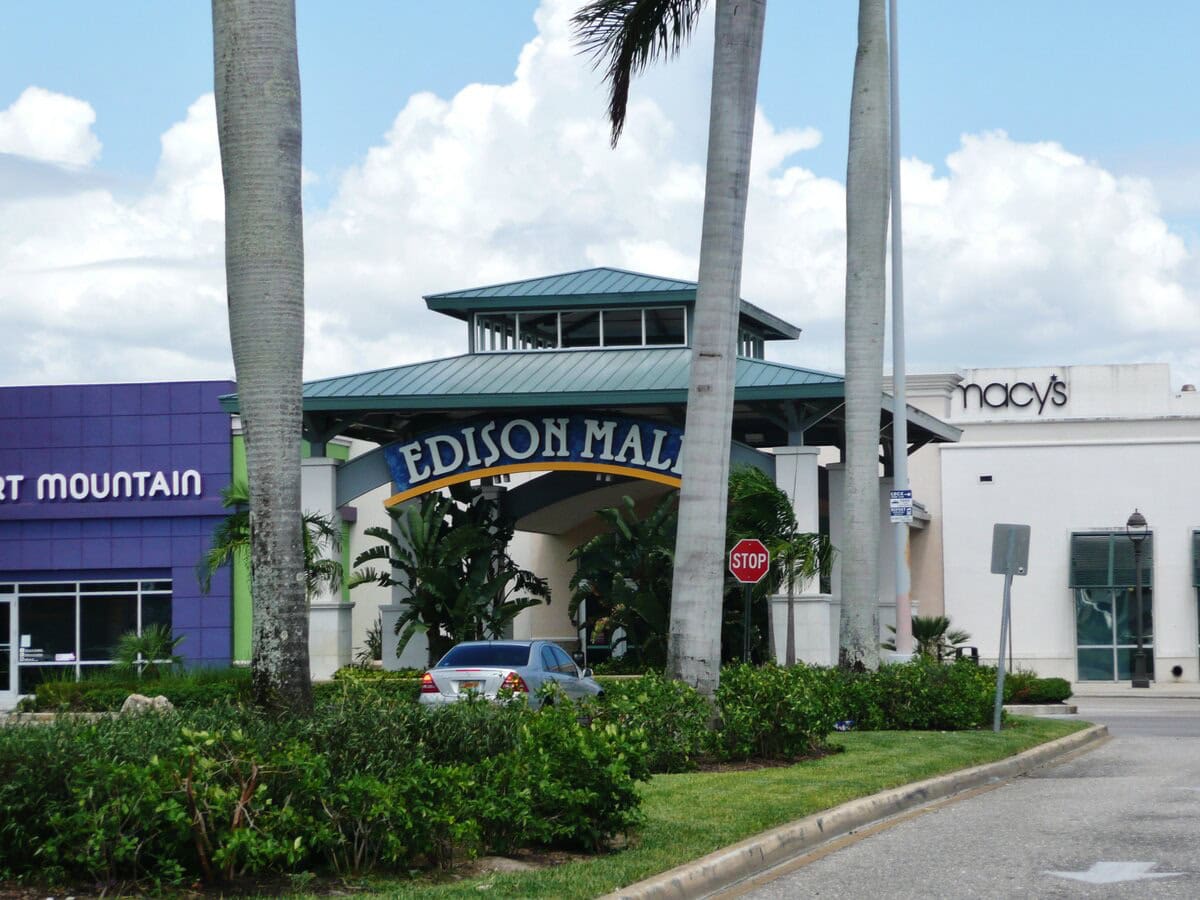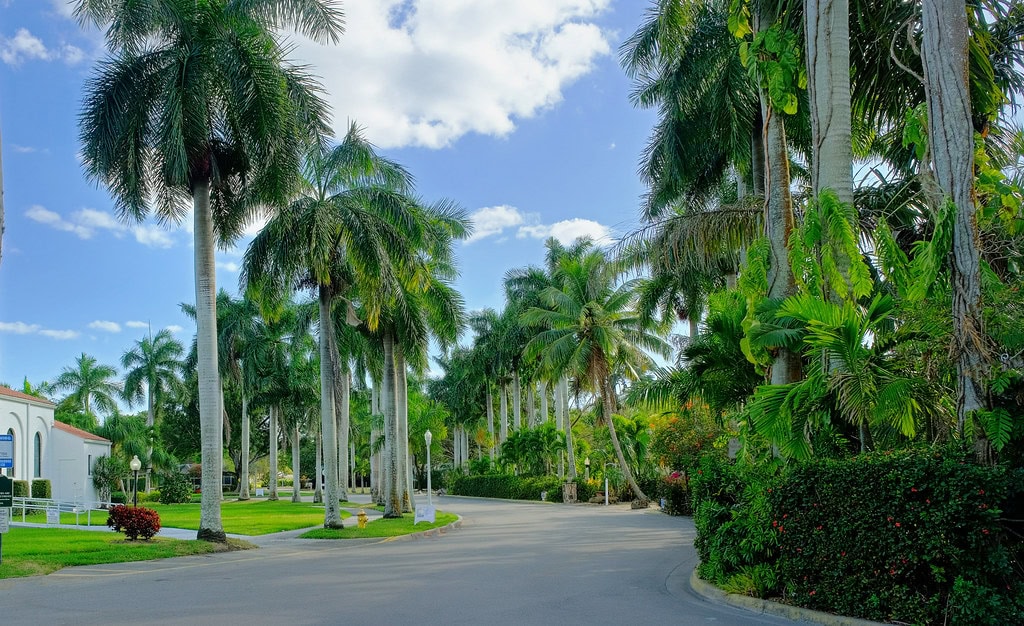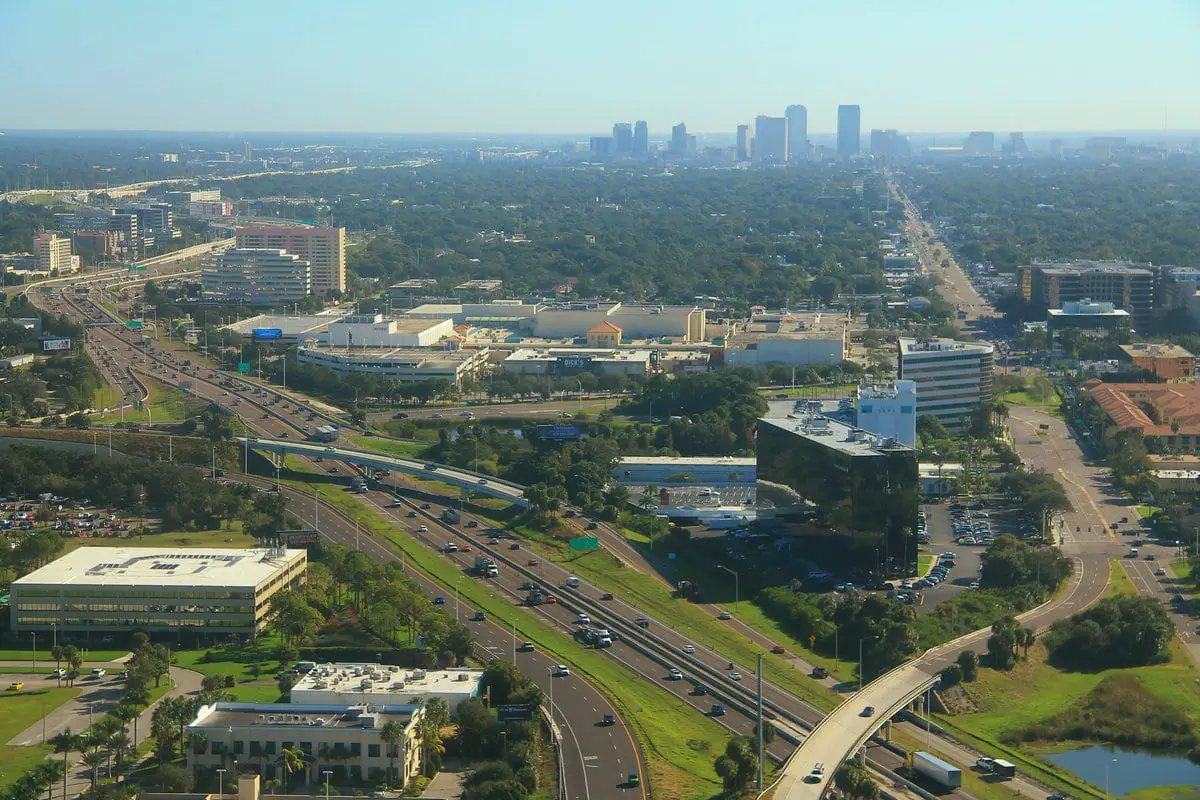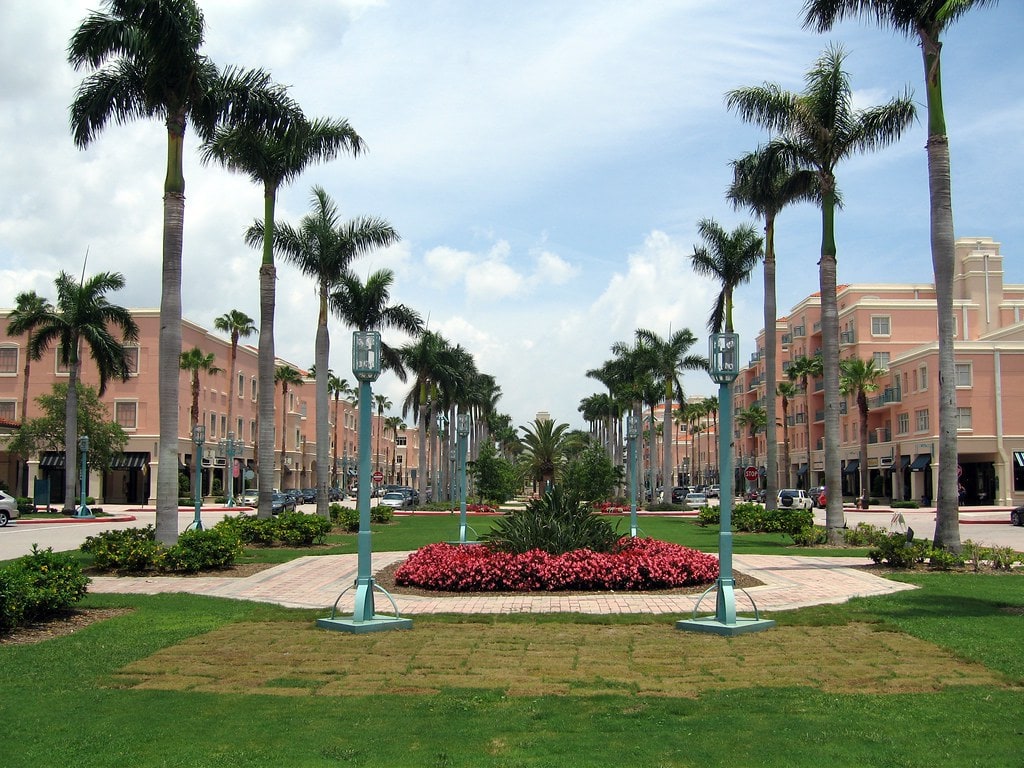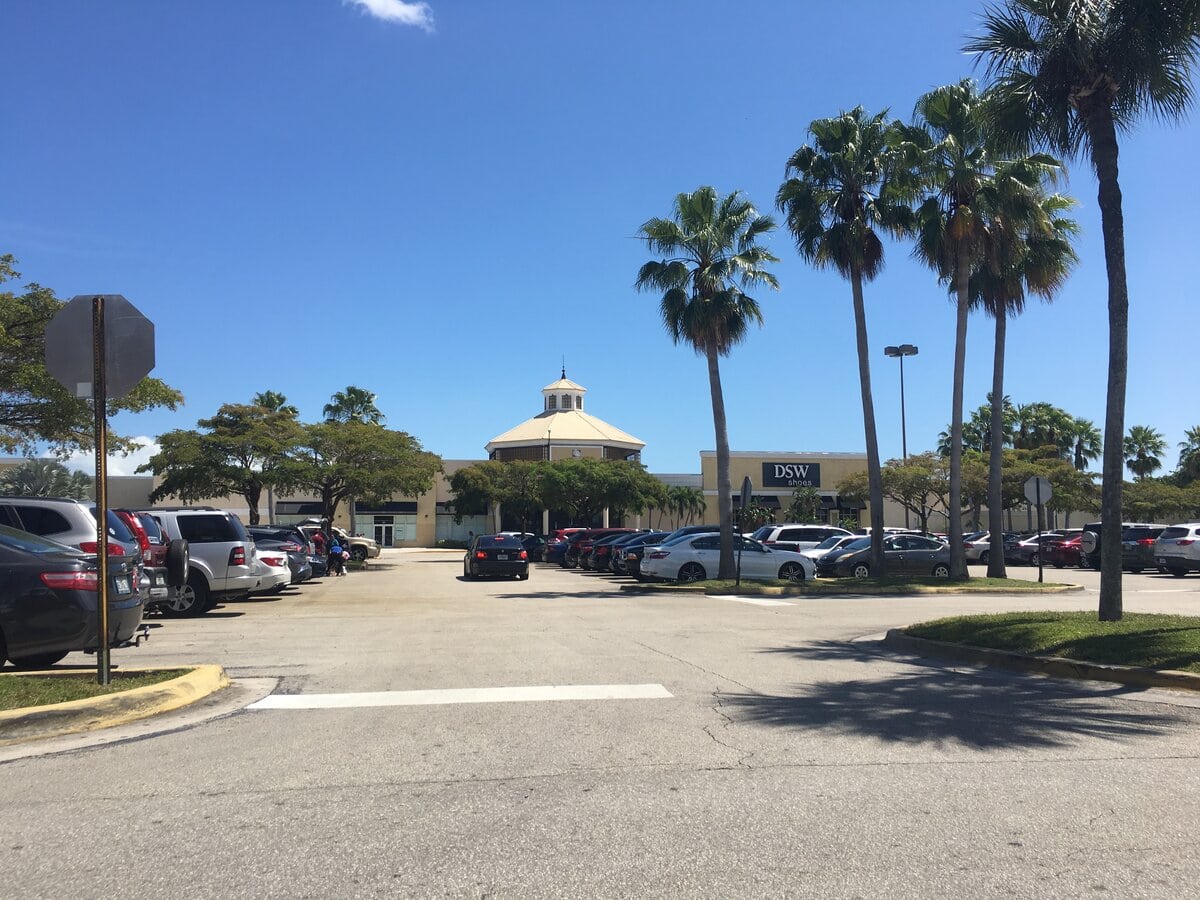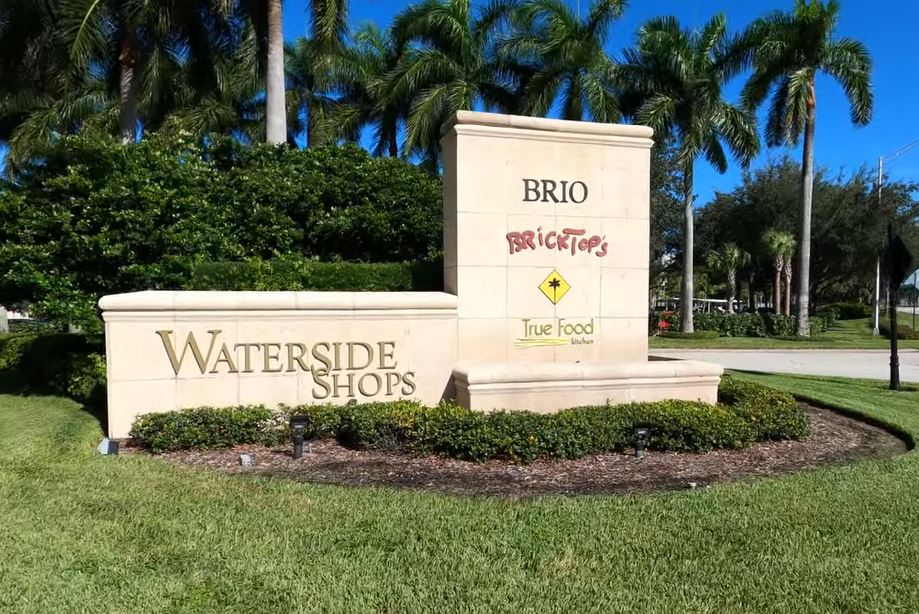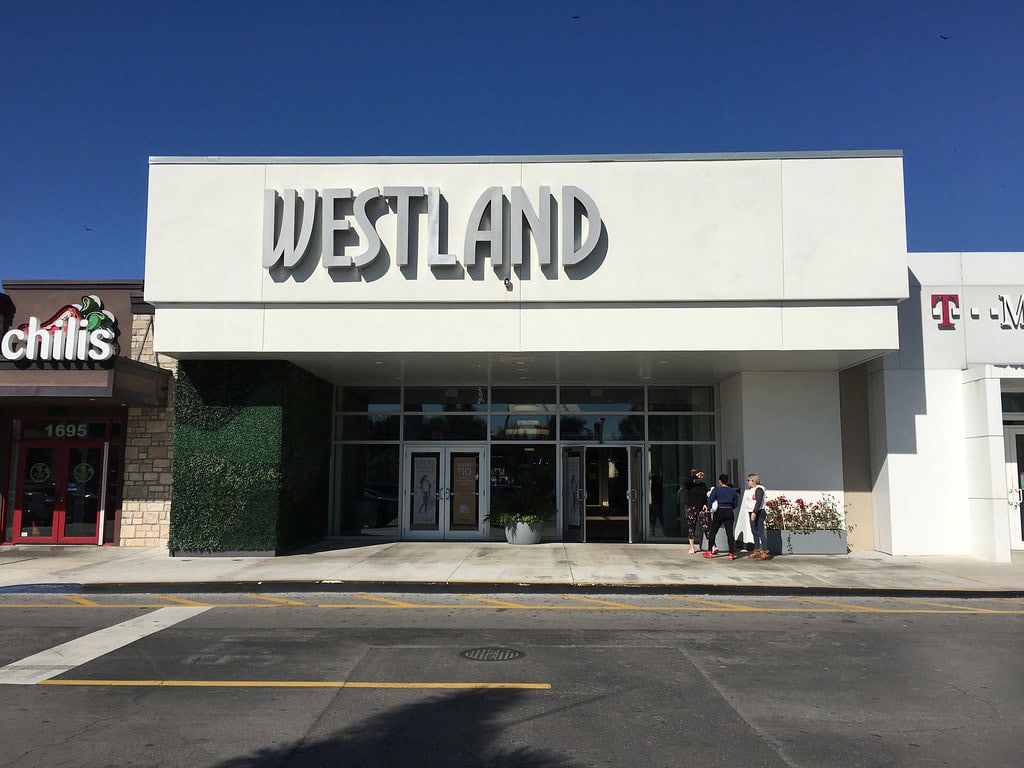Edison Mall at the far edge of Fort Myers
In the early 1960s, downtown Fort Myers was still the main shopping area. JCPenney was in the Langford Building, and Sears was across the street in the Heitman.
The south side of town was mostly open land along a narrow two-lane U.S. 41. Near Colonial Boulevard, there was just a single Publix, a drive-in theater, and plenty of open sky.
George Sanders, a local developer known for practical ideas, learned that Sears and JCPenney wanted larger stores.
Rather than see them move elsewhere, he proposed something new for the area: a mall with a roof and air conditioning, built on farmland at U.S. 41 and Colonial.
Sears would anchor one end, JCPenney the other, Maas Brothers would be in the center, and Walgreens and Woolworth's would complete the new indoor shopping space.
Edison Mall was named after Thomas Edison, who had a winter home and laboratory in Fort Myers. The mall opened in stages.
Sears was the first to open on October 28, 1964, even before the main hallway was finished. Maas Brothers and the first section of the enclosed mall opened on October 8, 1965.
JCPenney opened on March 17, 1966, completing the three-store plan that shifted the city's shopping center to the south.
Escalators, Maas Brothers, and first glory
Maas Brothers was at the center of the original mall, and it felt more exciting than a regular store.
It was the first time the chain was the main store in a mall with a roof after being downtown for years, and it got a lot of attention by bringing Fort Myers its first escalators.
Parents brought their kids just to ride the moving stairs. For a while, the escalators were as popular as anything you could buy.
Upstairs, the Suncoast Restaurant served simple meals and coffee to shoppers who could now spend hours inside without leaving.
Walgreens gave out medicine and sold makeup, while Woolworth's served food at the counter and sold almost everything else.
For people used to walking between sunny storefronts, Edison Mall felt new and modern, with bright lights, cool air, and everything in one place.
There was also an important change in how the mall was set up. With Sears and JCPenney at opposite ends of the main hallway, Edison Mall became known as the first place to have both stores in the same building.
Shoppers could compare sofas and shirts without moving their cars.
By the mid-1970s, it was clear the mall was doing well, so Maas Brothers got bigger in 1974, and in 1977, the mall started a project that made Sears twice as big and fixed up the shared spaces.

Burdines wings, food courts, and more space
Burdines, the well-known Miami department store, brought the next phase of growth. Throughout the 1970s, Burdines considered several Fort Myers locations.
Although there was talk of building another large mall farther south at U.S. 41 and Daniels, that plan never happened.
Instead, Burdines picked Edison Mall and opened a two-story store there on August 2, 1979. The building was even designed to add a third floor if needed in the future.
Inside, a big open area ran through the middle, making a tall space that was different from the lower ceilings in the older stores.
New hallways connected JCPenney to Burdines and Burdines to Maas Brothers. This gave Maas Brothers another entrance and changed the mall's simple, straight layout into a more winding loop.
As the first big expansion was still underway, Sanders sold Edison Mall to Aster Properties and left the project that had already changed how people saw Fort Myers.
In 1981, a food court opened near Sears, bringing pizza, orange chicken, and French fries together in one busy place.
The quiet of department store dining rooms gave way to mall eating as a noisy commons, dominated now by trays and neon logos.
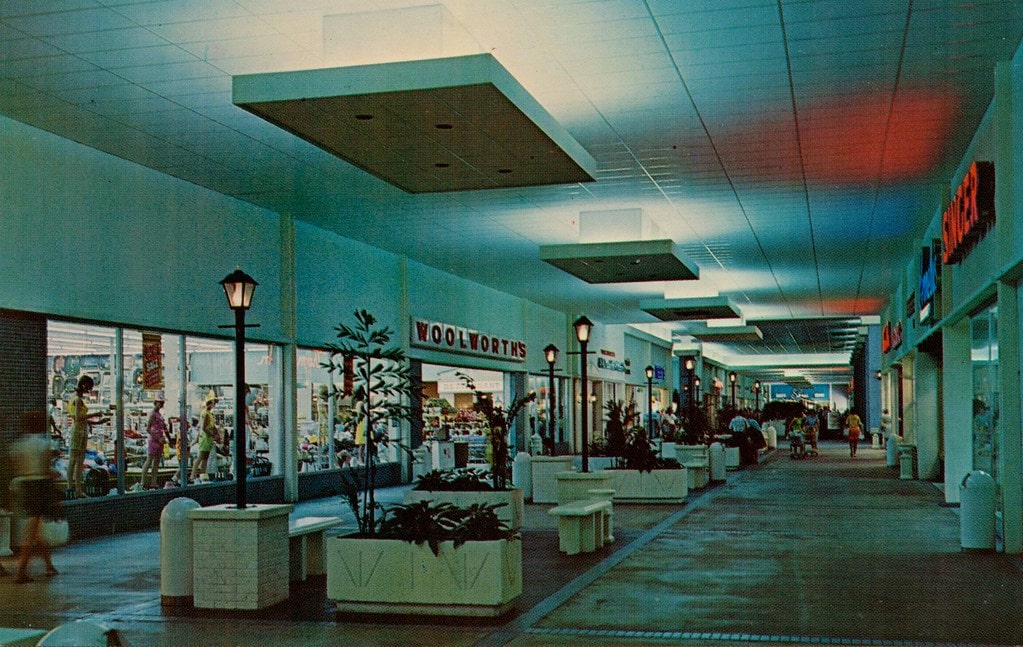
From Robinsons to Dillard's and twin Burdines
By 1985, the mall was ready for another layer. An expansion added more interior space and a fifth anchor, Robinsons of Florida, a regional offshoot of a California chain.
The logo did not stay long. In 1987, Robinsons sold its Florida stores to Maison Blanche, and on March 28, 1988, the Edison Mall location was rebadged with the New Orleans name.
The merchandise racks barely moved; the charge cards and the bags changed overnight.
In August 1991, that box and several sister stores along Florida's Gulf Coast were sold again, this time to Dillard's.
The Arkansas-based chain expanded and remodeled its new Fort Myers outpost and came back in 1999 to do it all over again, converting the onetime Robinsons into a modernized Dillard's that still anchors the property.
Meanwhile, a more intimate reshuffle was underway. In 1991, longtime Florida rivals Maas Brothers and Burdines were merged under the Burdines banner by their parent company.
Edison Mall kept both buildings. The former Maas Brothers store was rebadged Burdines on October 20, 1991, and turned into the women's store.
The original Burdines kept men's, kids, and home. Both buildings were remodeled in 1994, erasing most of the visible seams between old identities.
Renovations, lifestyle wings, and Simon era begins
The main stores did not change, but the rest of the mall got a fresh look. In 1998, skylights were installed, letting Florida sunlight brighten a space that once depended only on fluorescent lights. The natural light made the area feel softer.
By the early 2000s, Edison Mall was owned by Simon Property Group, a large company from Indianapolis that was known for improving older malls and adding new things.
Simon saw the big mall in Fort Myers as a place that could be brought back to life.
In 2005, the company announced a $10 million renovation that would add a 43,000 square foot outdoor area and update the inside.
The Beck Group of Dallas worked on the outside, while a design firm from Atlanta worked on the inside.
The plan included new places for restaurants and nicer stores facing U.S. 41, as well as new floors, brighter lights in the food court, more seating, better restrooms, improved shared spaces, a new front, and three renovated entrances.
The project marked a change from a mall that only faced inward to a mix: part 1960s enclosed hallway, part open-air area for eating and shopping.
Then, in 2014, Simon separated a group of malls into Washington Prime Group, a new real estate company based in Columbus, Ohio.
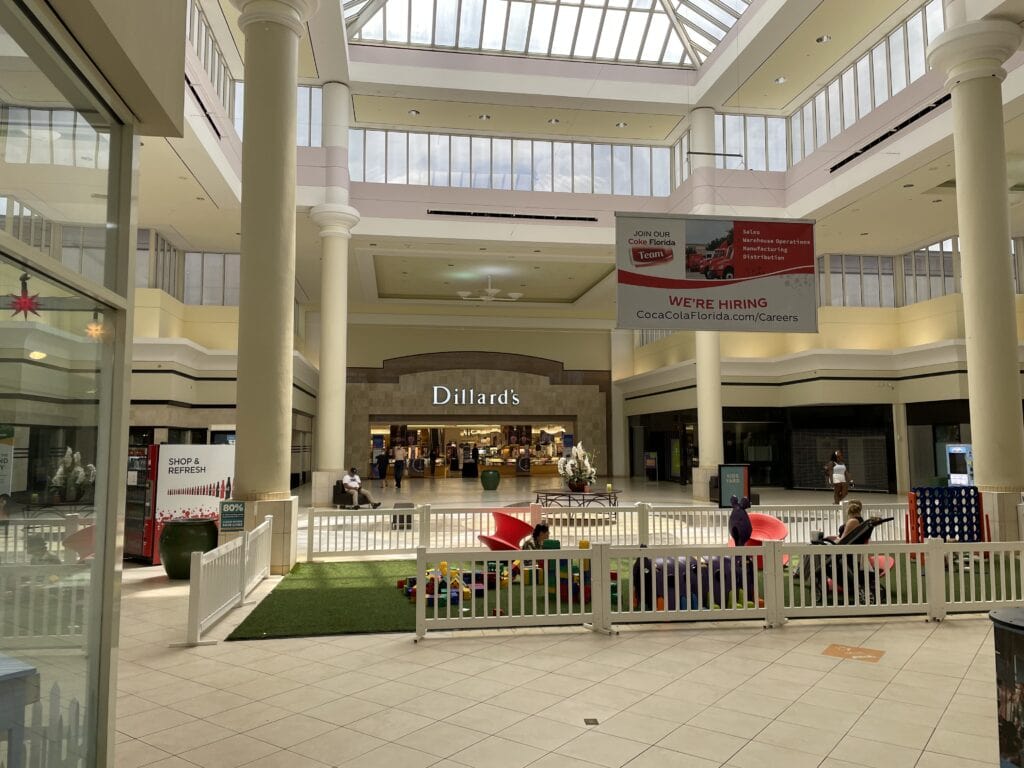
Bankruptcy, dark anchors, and broken pipes
The new structures looked efficient on paper until the wider retail economy shifted. By June 2021, Washington Prime Group was in Chapter 11, citing pandemic-era strain.
Washington Prime emerged from bankruptcy with a smaller portfolio that still included Edison Mall, but the narrative had changed from expansion to survival.
The anchors also faced their own reckoning. Sears, which had opened on the site in 1964 and helped justify the mall in the first place, finally closed on February 2, 2020.
It was the last Sears in Southwest Florida. The large single-story building at the north end of the mall went dark.
In early 2021, Lee County and the state health department temporarily converted it into a COVID-19 vaccination site, turning retail floor space into one of the least glamorous but most useful civic facilities imaginable.
Inline spaces cycled through seasonal tenants. A former Love Culture became a Spirit Halloween, then a pop-up Christmas Tree Shops that also faded.
In October 2019, before the bankruptcy, Washington Prime had sold 41-acre ground under and around Edison Mall to Kawa Capital Management for $33.3 million, then leased it back on a long-term ground lease, describing the deal as financing rather than retreat.
The building itself began to fail in more visible ways. A water main break on June 12, 2022, forced the mall to close for a day.
Another break on March 19, 2024, again shut much of the property, while department store workers complained later that year about stifling heat and mildew-like smells blamed on air conditioning problems.
Asian markets, buses, and an uncertain future
The Sears building stayed empty for a few years. In November 2024, its owner sold the old store to a company from Hong Kong for just over $5.8 million.
The new owners announced plans for a development focused on Asian food and shopping, including a food hall, an Asian market, restaurants, and stores.
Any extra space would be rented out to other good tenants. There was also talk of possibly building apartments where the store and part of its parking lot are now.
At the same time, the city was working on the U.S. 41 road as part of its Southern Gateway project. The five-year project to fix up the road between Edison Mall and downtown finished around 2023.
In April 2025, a new fast bus route started running between Lehigh Acres and Fort Myers, using the mall as its main stop and slowly turning Edison into a main bus center.
That same spring, Washington Prime decided to sell all ten of its last Florida malls, including Edison, to pay off debt.
Now, the property is seen as a possible place for a new mix of homes, food halls, and stores, with plans to build them in taller buildings than before.
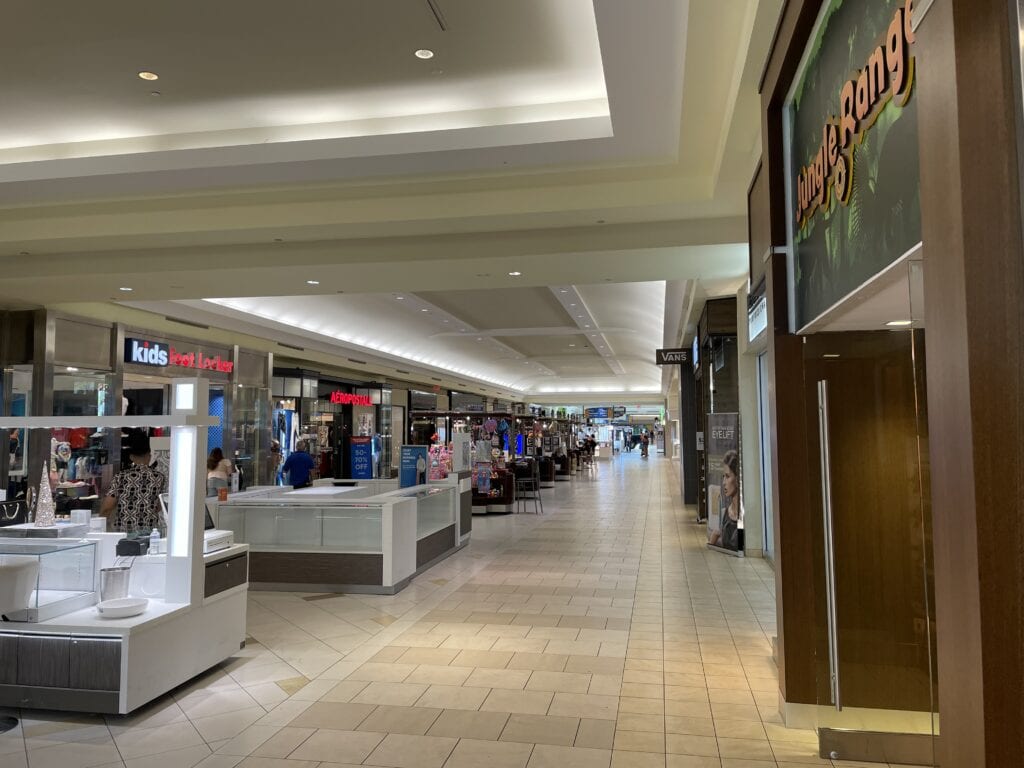
For now, Edison Mall still operates as usual. It promotes itself as a place to eat, shop, and play, and it is still the only enclosed super-regional mall in Fort Myers.
The mall has 1,051,000 square feet, 130+ stores and services, four anchor stores, free parking and Wi-Fi, phone charging stations, and a kids club.
The future is harder to predict. As you walk through the concourse, you can see the decades stacked together.
The 1960s brought a risky bet on farmland, the 1970s saw big dreams for department stores, the 1980s and 1990s had brands changing all the time, the 2000s were full of hope for a certain lifestyle, the 2010s focused on money plans, and now the 2020s are about finding a new reason to exist.
No matter what Edison Mall becomes, it already serves as one of the region's most revealing museums, even if people don't call it that.

